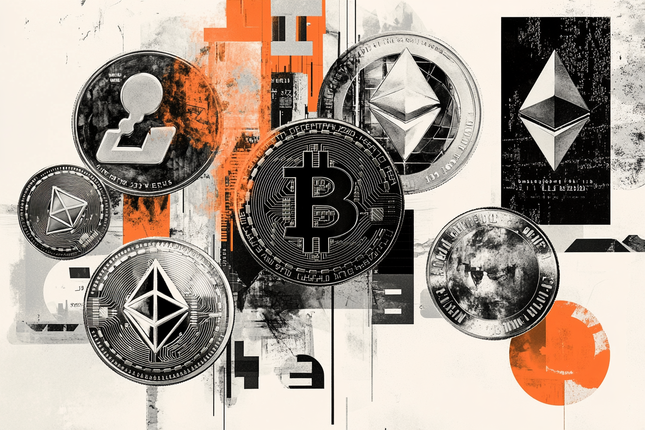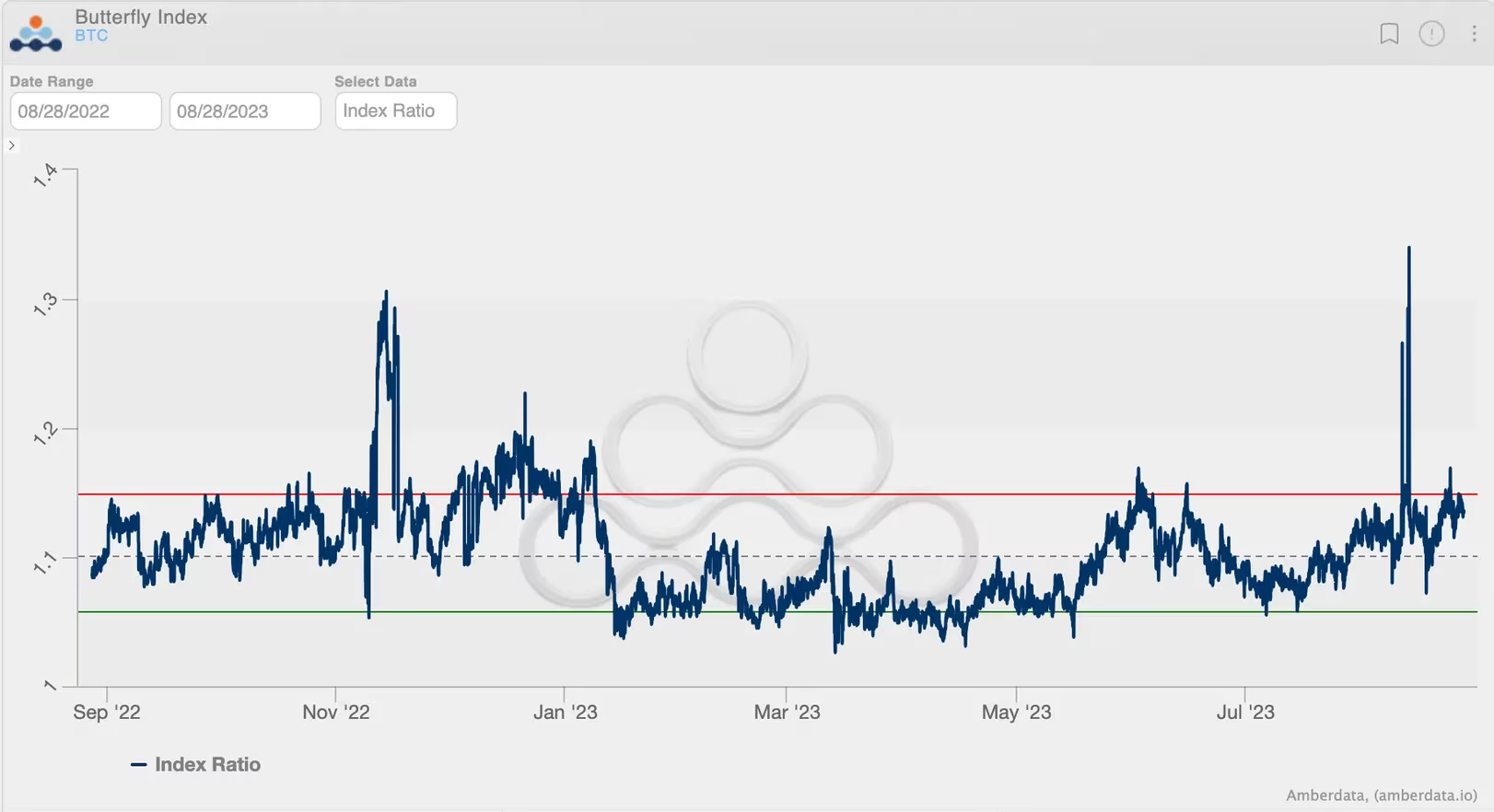-
Relative richness of out-of-the-money call and put options tied to bitcoin suggests traders are pricing in "tail risk" in the bitcoin market.
-
Tail risk suggests a higher possibility that an investment will move more than three standard deviations from the mean.
They call it tail risk in the crypto market: the risk of an asset moving three standard deviations from its current price on the back of a rare event.
Traders fear such an event in bitcoin (BTC) even though the cryptocurrency has been listless around $26,000 since falling over 10% in the week ended Aug. 20. BTC's annualized seven-day historical or realized volatility has cooled to 26% from nearly 60% seen early last week, according to Amberdata.
"Bitcoin's butterfly index has risen to yearly highs. It shows investors and market makers are pricing in tail risk," Griffin Ardern, volatility trader from crypto asset management firm Blofin, said.
The butterfly index gauges the relative richness of the out-of-the-money (OTM) higher strike call options and lower strike put options by comparing crypto exchange Deribit's bitcoin volatility index (DVOL) with the at-the-money (ATM) volatility.
An elevated index indicates relatively stronger demand for OTM options (wings) or call options at strikes higher than BTC's current price and puts at strikes lower than BTC's going market rate. In other words, it signifies traders' fear of the tail risk or sensitivity to uncertainty.
Calls are derivative contracts that give the purchaser the right to buy the underlying asset at a preset price at a later date. A put option gives the right to sell. A call buyer is implicitly bullish on the market, while the put buyer is bearish. Demand for OTM calls and puts rises when traders anticipate an above-average price move.
"Looking at the BTC butterfly index, we can see that wings are near the upper 90% percentile (red horizontal line). So, [while] outright volatility [metrics] seems confident in spot price consolidation, traders are still paying up for tails," Greg Magadini, director of derivatives at Amberdata, said in the weekly newsletter.
The butterfly index remains elevated, indicating lingering fears of an outsized move in bitcoin's price. (Amberdata) (Amberdata)
The index is expressed as a ratio or spread between crypto exchange Deribit's bitcoin volatility index (DVOL) and the at-the-money (ATM) volatility. Deribit's DVOL considers the pricing for all options, while the ATM tool is based on pricing for at-the-money options.
The pricing for tail risk is consistent with the lingering macroeconomic uncertainty.
On Friday, Federal Reserve Chairman Jerome Powell reaffirmed that the central bank remains committed to hitting the 2% inflation target and keeping it there while signaling that the monetary policy will remain tight for longer than expected.
The Fed's continued bias for tightening has lifted bond yields to the highest since 2007. Rising yields tend to weigh over risk assets, including cryptocurrencies.
"A key insight from Jerome Powell is that 'getting inflation back to 2% likely requires below-trend growth', meaning he isn't afraid of some pain to the economy and jobs market," Magadini noted.
Ardern said the tail risk will likely remain higher in the lead-up to Friday's U.S. nonfarm payrolls report. Per Wall Street Journal, the data is likely to show the U.S. economy added 200,000 jobs last month following June's 209,000 additions, resulting in the jobless rate holding steady at 3.6%.
All writers’ opinions are their own and do not constitute financial advice in any way whatsoever. Nothing published by CoinDesk constitutes an investment recommendation, nor should any data or Content published by CoinDesk be relied upon for any investment activities. CoinDesk strongly recommends that you perform your own independent research and/or speak with a qualified investment professional before making any financial decisions.
Recommended Content
Editors’ Picks

Bitcoin, Ethereum and XRP steady as China slaps 125% tariff on US, weekend sell-off looming?
The Cryptocurrency market shows stability at the time of writing on Friday, with Bitcoin (BTC) holding steady at $82,584, Ethereum (ETH) at $1,569, and Ripple (XRP) maintaining its position above $2.00.

Bitcoin Weekly Forecast: Market uncertainty lingers, Trump’s 90-day tariff pause sparks modest recovery
Bitcoin price extends recovery to around $82,500 on Friday after dumping to a new year-to-date low of $74,508 to start the week. Market uncertainty remains high, leading to a massive shakeout, with total liquidations hitting $2.18 billion across crypto markets.

Bitcoin, Ethereum, Dogecoin and Cardano stabilze – Why crypto is in limbo
Bitcoin, Ethereum, Dogecoin and Cardano stabilize on Friday as crypto market capitalization steadies around $2.69 trillion. Crypto traders are recovering from the swing in token prices and the Monday bloodbath.

Can FTX’s 186,000 unstaked SOL dampen Solana price breakout hopes?
Solana price edges higher and trades at $117.31 at the time of writing on Friday, marking a 3.4% increase from the $112.80 open. The smart contracts token corrected lower the previous day, following a sharp recovery to $120 induced by US President Donald Trump’s 90-day tariff pause on Wednesday.

Bitcoin Weekly Forecast: Market uncertainty lingers, Trump’s 90-day tariff pause sparks modest recovery
Bitcoin (BTC) price extends recovery to around $82,500 on Friday after dumping to a new year-to-date low of $74,508 to start the week. Market uncertainty remains high, leading to a massive shakeout, with total liquidations hitting $2.18 billion across crypto markets.

The Best brokers to trade EUR/USD
SPONSORED Discover the top brokers for trading EUR/USD in 2025. Our list features brokers with competitive spreads, fast execution, and powerful platforms. Whether you're a beginner or an expert, find the right partner to navigate the dynamic Forex market.
